Music and lowrider looks were what inspired the creation of Bob Ball’s fantastic scooter, Eclipse. We think he achieved his goal…
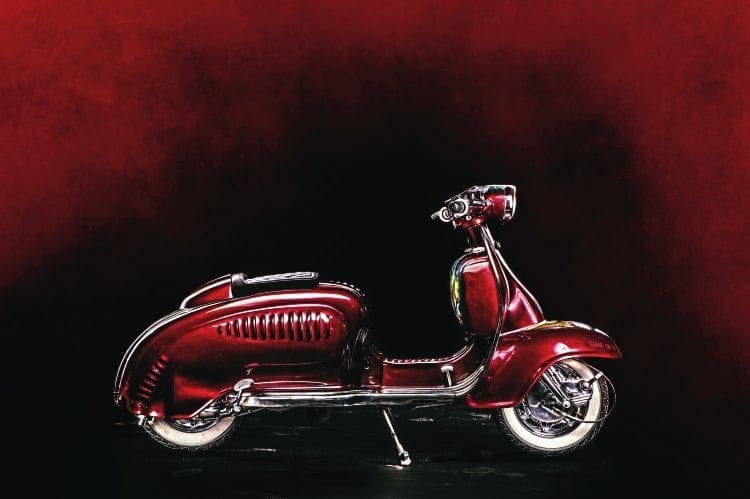
Two subjects blend
Bob had always wanted to build a lowrider scooter, which would be reminiscent of the American 1950s lowrider look and have a paint theme based on The Eclipse, the first legal all-night ‘rave’ club. You could be forgiven for wondering how the two subjects blend together but it’s simple: don’t over-think it because Bob has done it, and it works perfectly.

The way it should be seen
“I’d been thinking about how to go about delivering the looks and the feel of the scooter,” Bob explained. “I wanted it to be perfect and choosing the right model in the first place was critical. The bodywork needed to lend itself to the lowrider look, and the scooter needed to have the space for the artwork. The slim-style body shape wasn’t right for the project; it didn’t give the right feel, but the more generous broad-style of the Series 2 was perfect.”
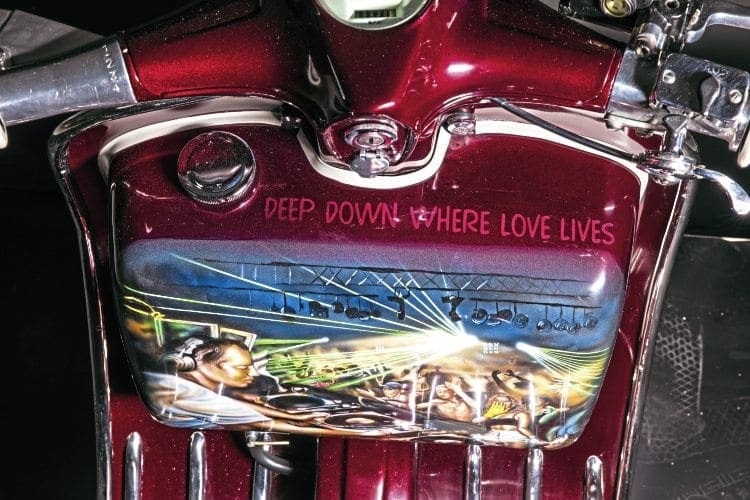
In January 2016 Bob got on with things and purchased an API Li150 Series 2, which would provide the blank canvass for him to work on.
Love no matter what
To get the lowrider looks it was obvious that Bob would need to lower everything, which would present a real challenge at every stage. Not satisfied with giving himself a fabrication mountain to climb; to get the 1950s lowrider feel absolutely perfect Bob decided he would add louvres to the bodywork, which enhance the look of the scooter and serve as a practical addition to cool the engine compartment.

Developing the look
When Bob set about the bodywork, all the body panels on the scooter required various adjustments. The outriggers were dropped by 2in, as were the legshields and horncasting. The front mudguard was given an extended ‘skirt’ all round it and to create the ‘dropped look’ at the rear of the scooter the back end of the sidepanels was also extended.
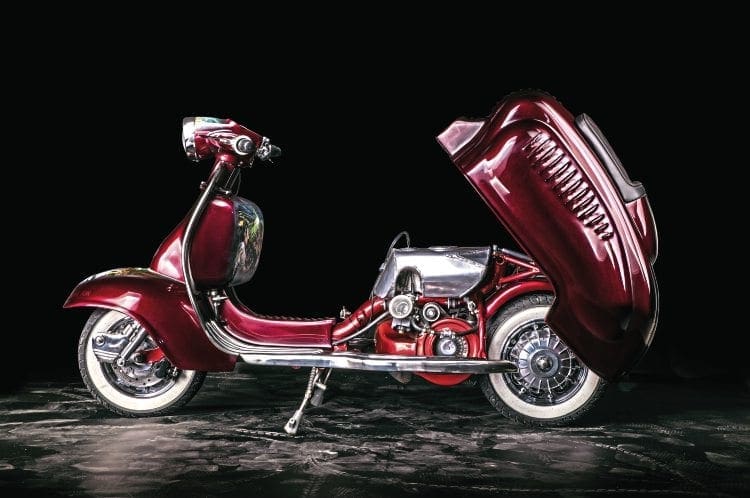
In the meantime, Bob made his own jig to jig out the forks and shortened the fork stem by 2in to make them sit in perfect alignment with the front end.
Seeing the bigger picture
The under-seat frame section was extended width-wise by one inch at each side. To compensate for the extra frame width the rear footboards needed to be extended, and as a result the kick-starter needed to be ‘swanned out’. In turn, the lowering of the bodywork meant that the stand had to be shortened by two inches.
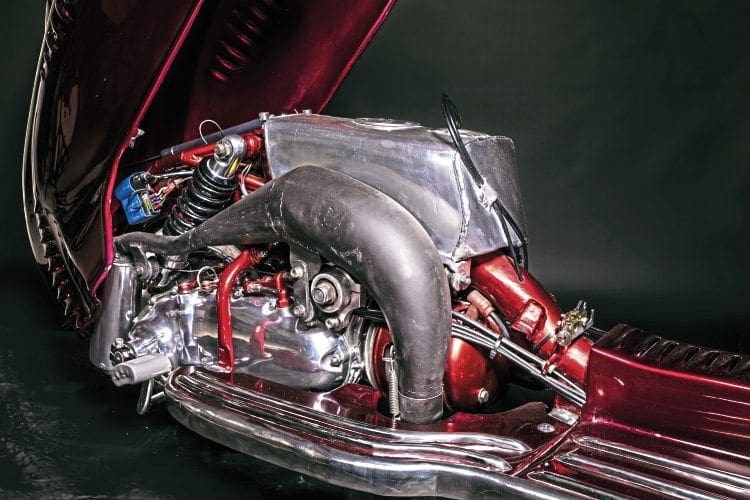
The louvres were then painstakingly made by hand. A hole was drilled at each end of each louvre’s position and then, with self-tapping screws, an MDF template was attached to the body panel. After the template had been attached to the bodywork each louvre was then individually tapped out into the shape of the template. “The alignment of each louvre had to be perfect, and the shape of each one had to match the ones at either side of it. There was no room for error and there were no second chances; each one had to right first time or the look would be totally compromised,” Bob explained.
The louvred sidepanels were then welded to the under-seat frame section to create a single rear frame/ body panel, which lifts on a hinge situated behind the rear wheel.
Intelligent thinking
The support at the rear of the seat is made from a Series 3 front mudguard and blends into the bodywork perfectly. The under-seat fuel tank is a one-off item fabricated by Bob. The attention to detail is outstanding: Bob has welded a vertical tube-way through the tank, which allows the choke and throttle cables to run through it to the carb without obstruction. The under-seat tank also sits purposely slightly out of centre on the frame to allow room for the ‘up-and-over’ high-level exhaust, which was hand-crafted by Bob from what he believes to be a Janspeed item he picked up at a parts fair. The exhaust runs perfectly through the engine compartment and when the frame is closed only the very end of it can be seen emerging downwards from behind the rear of the extended sidepanel.
Spray booth
To get things going with the paintwork, Bob built himself a spray booth and set about adding the colour. He chose to put cherry red on top of silver, and then metal-flake base, which was followed by nine coats of deep red candy and finished off with six coats of lacquer.
With the initial deep red base-coat completed the panels were handed over to Dewey Franklin for the artwork to be added. Dewey had initially suggested that the artwork should be completed in black and white, but Bob was adamant that he wanted coloured images. “I believed coloured images would support the rave scene better as they would show the DJs in action, the lasers shooting around the dance floor and generally capture the atmosphere of the scene perfectly.”

On the top of the headset, the artwork shows two fingers reaching towards each other with a spark connecting them blended into the gem light. The ‘Eclipse’ graphic on the offside legshield is taken from an ‘Eclipse’ event flyer.

The front mudguard shows a mural of The Eclipse night club. The inner legshield fuel tank shows an image of DJ Sasha working the dance floor, which is filled with rave goers dancing to Alison Limerick’s Where Love Lives. The graphic, ‘Last Rhythm’ appears above the mural on the back end of the scooter, which shows Saffron from ‘N-Joi’ commanding the dance-floor over a packed room.
To finalise the paintwork, it was subjected to six more coats of lacquer and a delicate ‘flattening down’ process, which involved 1500 and 2000 grade wet and dry paper finished off with compound polish.
Detail
The front disc brake is on the opposite side to the usual position and is a modified Gilera Runner item, which Bob also picked up at a parts fair. Bob explained that the handling of the scooter is the best he’s even ridden, which is due to the low centre of gravity and heavy forks. The LED lights are off-the-shelf items, which have been perfectly frenched into the side panels. Bob painted the number plate onto the frame, which keeps the lines smooth, and the number plate light was positioned in such a way that it would sit perfectly with the flow of the back end of the frame.
Achievement of a lifetime
When you’ve been able to single-handedly produce a scooter of the calibre of the Eclipse; it shows a level of technical ability, knowledge, creativity, understanding and commitment to detail, which is at the top end of the scale. Bob has completed a masterpiece. At the VMSC Extravaganza this year, Eclipse took the award for ‘best custom first time shown’ and ‘best engineering’. The scooter is something for the eye to behold and it delivers looks and engineering in a way you’ll never forget.
A pictorial guide through the full story of the build
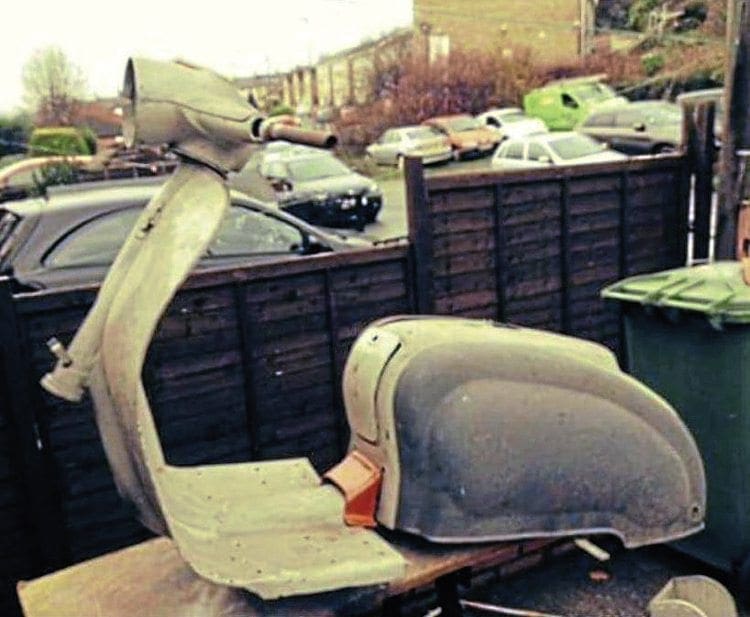
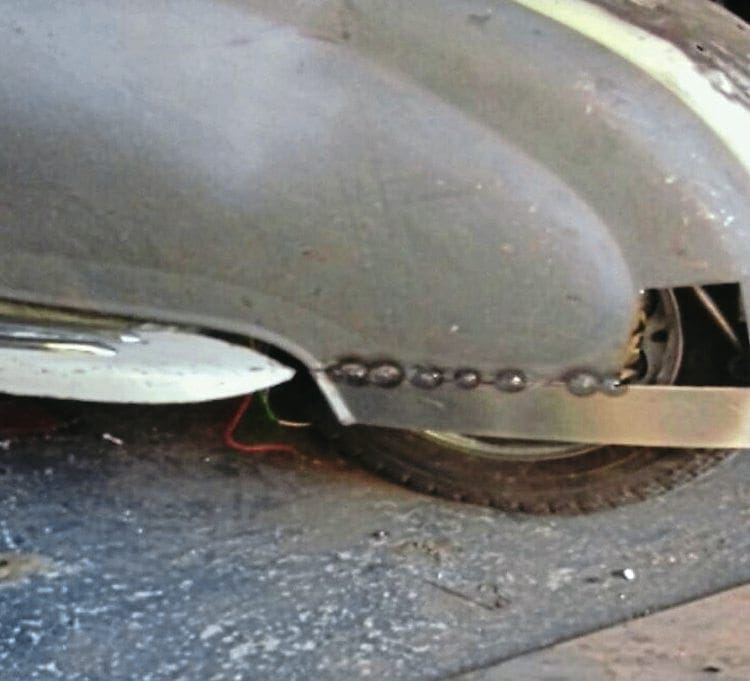

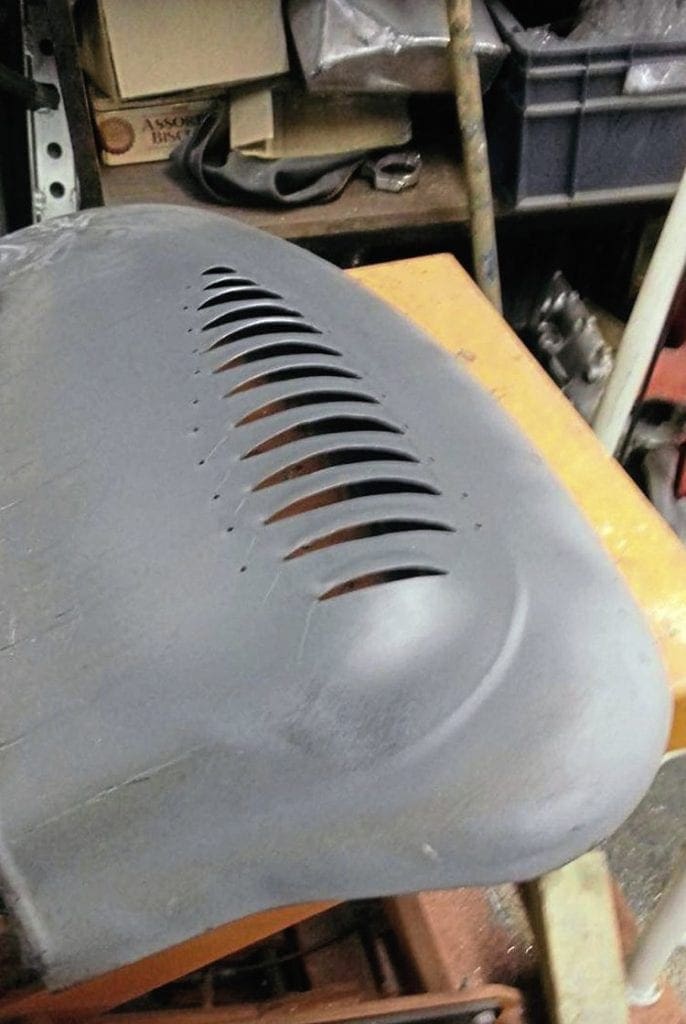
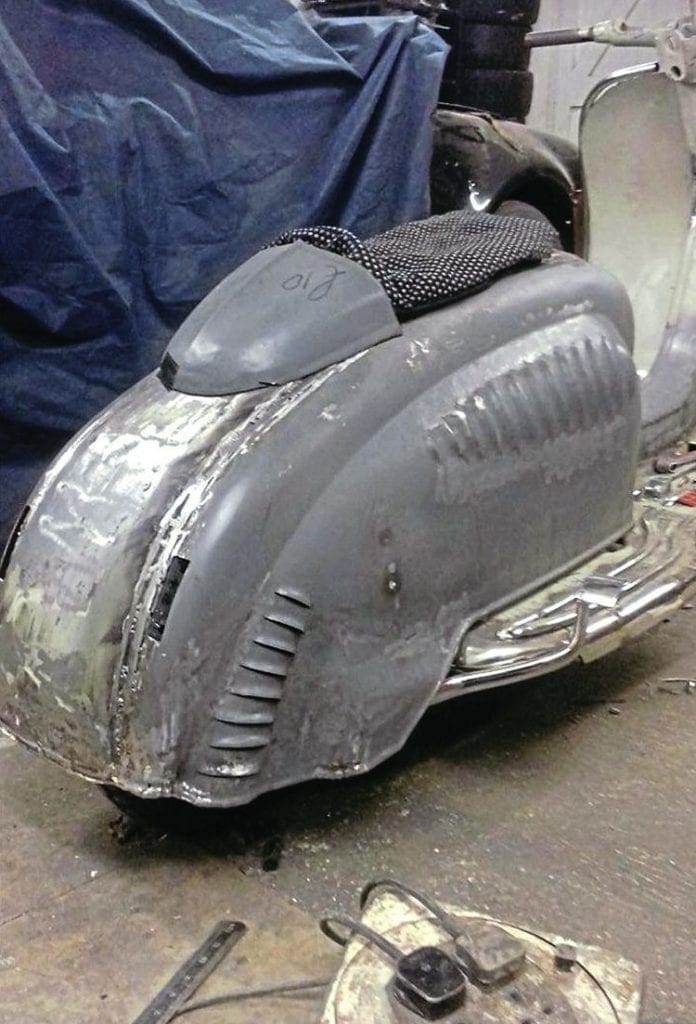


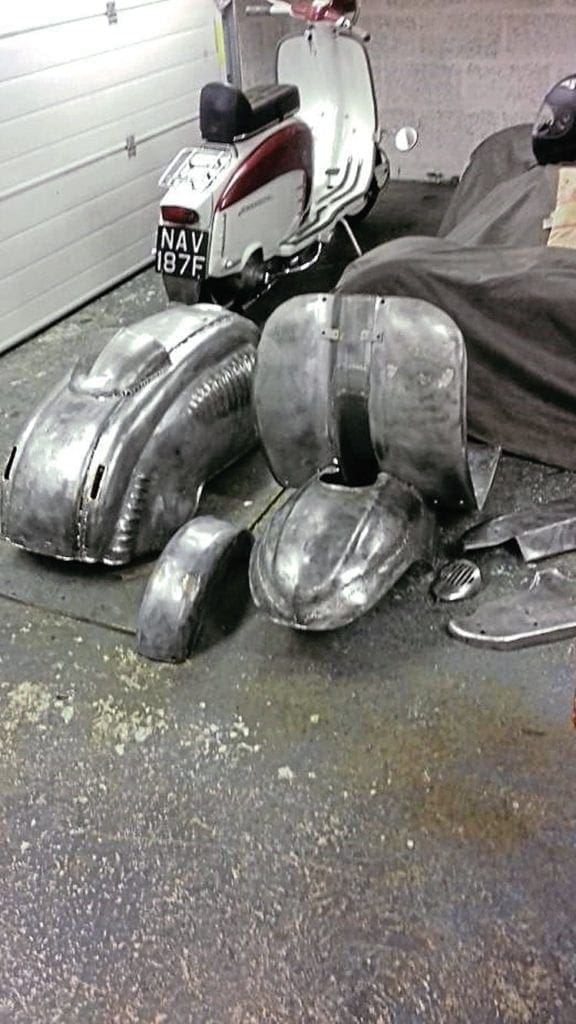
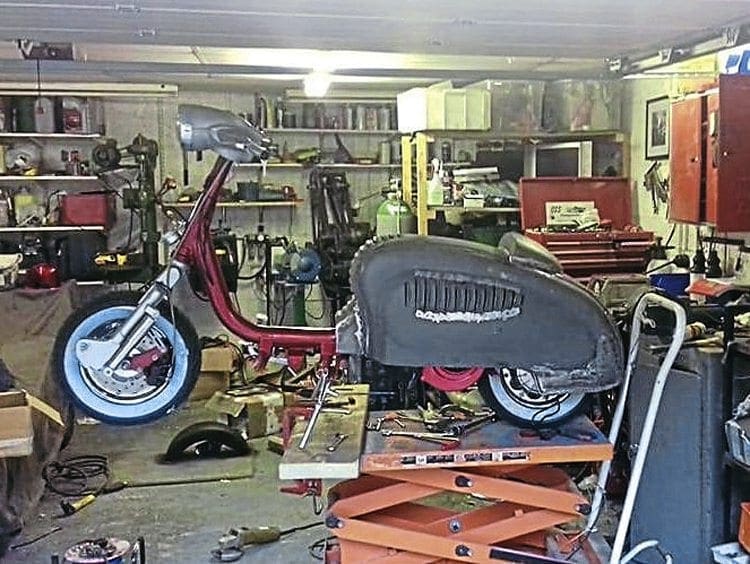
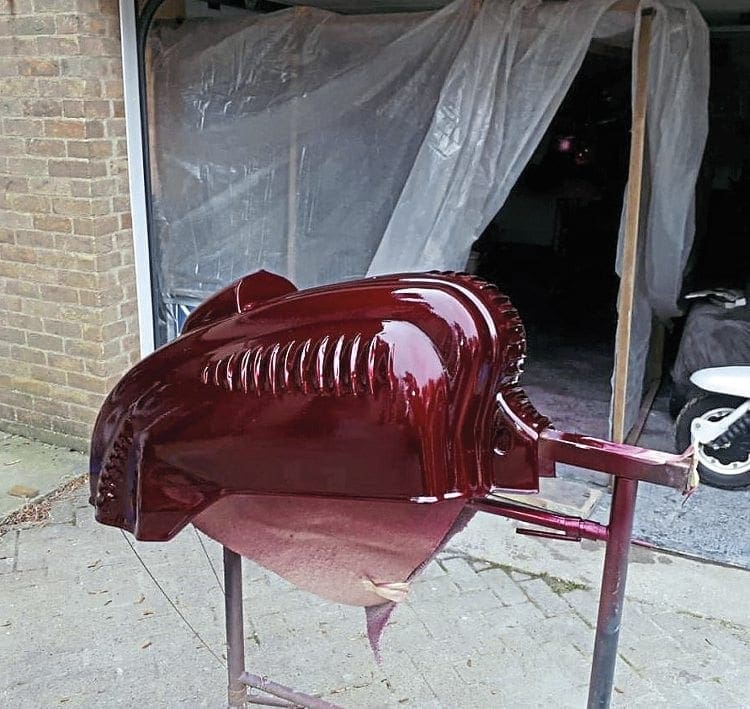
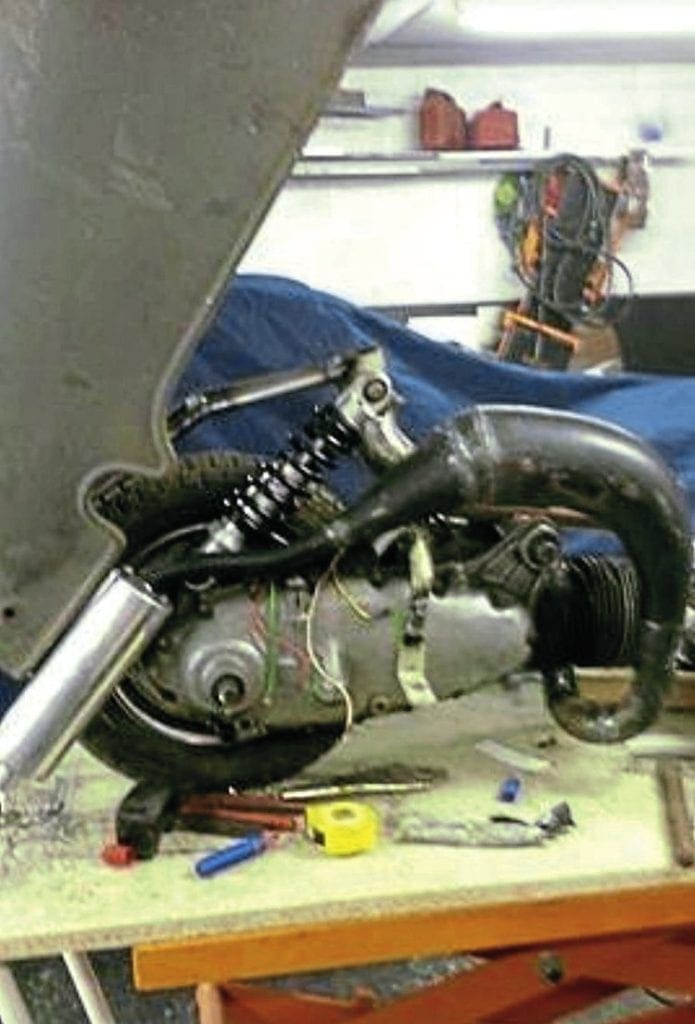
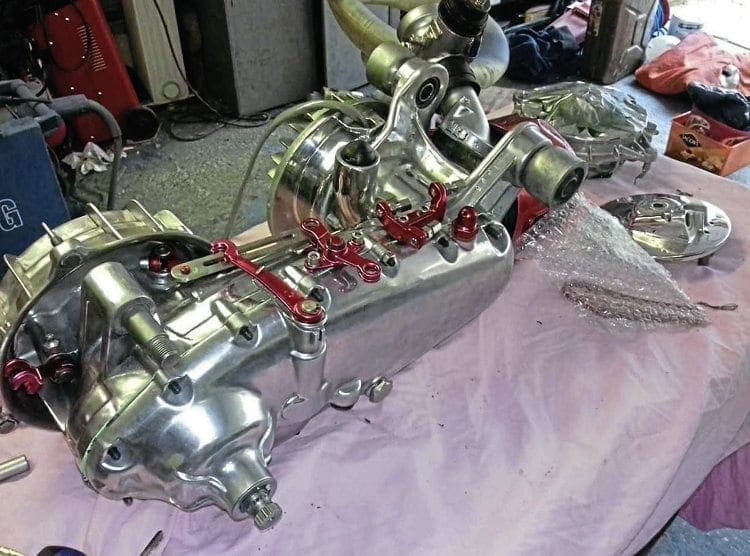
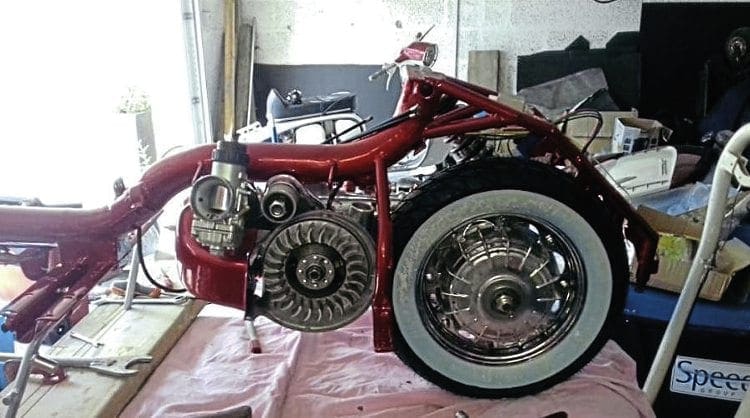
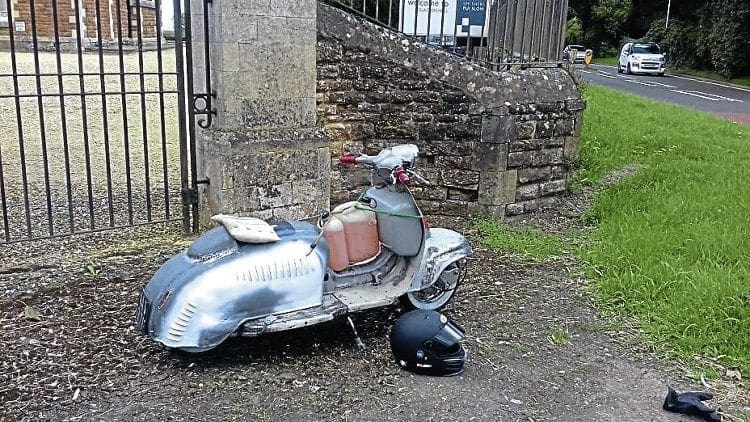
OWNER DETAILS
Name: Bobby Ball
Scooter club & twon: Douglas Stamford Scooter Club.
How and when did you first become interested in scooters: in 1979 ish… seeing older lads on scooters and Quadrophenia.
Your first scooter: Li 150 Series 1. I had it when I was 14 and bought it for £10, I did it up and sold it for £100!
Favourite scooter model: Sx200.
Favourite style of custom scooter: Creatively engineered ones.
First rally or event: Yarmouth 1981.
How did you get there: I persuaded the local YMCA to organise a trip there… they said never again!
Any stories: ’83 Weston-super-Mare. It was a very hot day so we put all the coats etc. in the van and rode out of town in just our T-shirts. Of course we then lost the van and when the sun went down we’d never been so cold in our lives! We tried to steal coats from a pub on the way home but couldn’t get any so we had to grin and bear every mile we rode. Our arms had never been so numb! The van driver wouldn’t show his face in town for a month afterwards.
Favourite rally: Cleethorpes.
Funniest experience with a scooter: On one of my scooters, I started it up, revved it high, let the clutch out and went flying backwards, it started up the wrong way round!
Furthest you’ve ever ridden: Isle of Wight.
What do you like about rallies: Custom shows and the night do’s if there is a variety of music.
SCOOTER DETAILS
Name of scooter: ‘Eclipse’, the first legal rave nightclub in the 90s.
What other themes did you consider before coming to this choice of theme for the scooter and why did you go with your chosen theme: Perception raves/Renaissance club in Mansfield. The Eclipse was always a good night with good memories.
Scooter model: API Li150 Series 2.
Date purchased & cost: January 2016 for £500.
Inspiration for project: I always wanted to build a low rider, which would be reminiscent of the American 1950s low riders.
Time to build & by who: Two years, by me.
Any specialised parts of frame mods. What and by whom: All fabrication, welding and machining done by me.
Engine spec: 225 Mugello.
Crank: AF Race 58.
Carb: 30mm Dellorto
Exhaust: Might be Janspeed (heavily modified).
Clutch: Four-plate.
Gearbox: Li150.
Porting work done by: Myself.
Dyno done by: Chalky.
Describe engine performance and power delivery: Engine pulls well up to mid-range, then flat for a bit and then takes off again.
Top speed & cruising speed: Top speed: 70mph.
Cruising speed: 60mph.
Is the scooter reliable: So far…
Paintwork & murals done by: Paintwork and graphics by me, artwork by Dewey.
Is there any powder coating: The frame is candy red.
What was the hardest part of the project: Making the back end pivot, etc. Just about everything fought me!
Do you have any advice or tech tips for anyone starting a project: Go for it; be adventurous, there are too many standard scooters out there for my liking.
Has the scooter won any show trophies: 2018 VMSC Extravaganza, Coventry. Best custom first time shown. Best engineered.
Is there anyone you wish to thank: John Corcoran – for the seat covering. He made one and it wasn’t what I had in mind so he started totally again at no extra charge! Protec Shock – made it an inch shorter at no extra charge. Dewey Franklin – worked on the murals.
THE CREATION OF ADAM
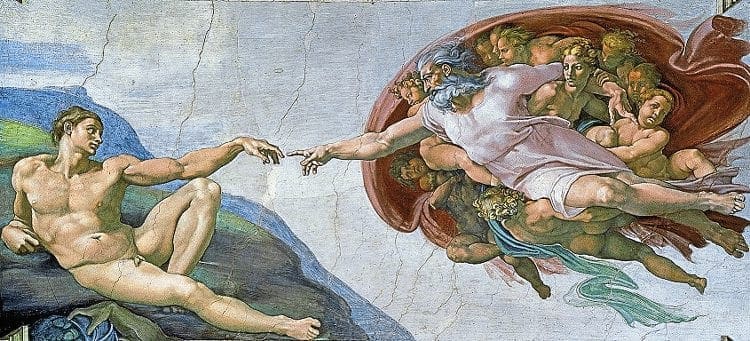
The artwork on the headset top has been developed from the fresco painting The Creation of Adam by Michelangelo, which forms part of the Sistine Chapel’s ceiling, painted around 1508-1512. It illustrates the Biblical creation narrative from the Book of Genesis in which God give life to Adam, the first man. The image of the near-touching hands of God and Adam has become an iconic symbol of humanity.
Words: Stu Smith
Photographs: Gary Chapman



